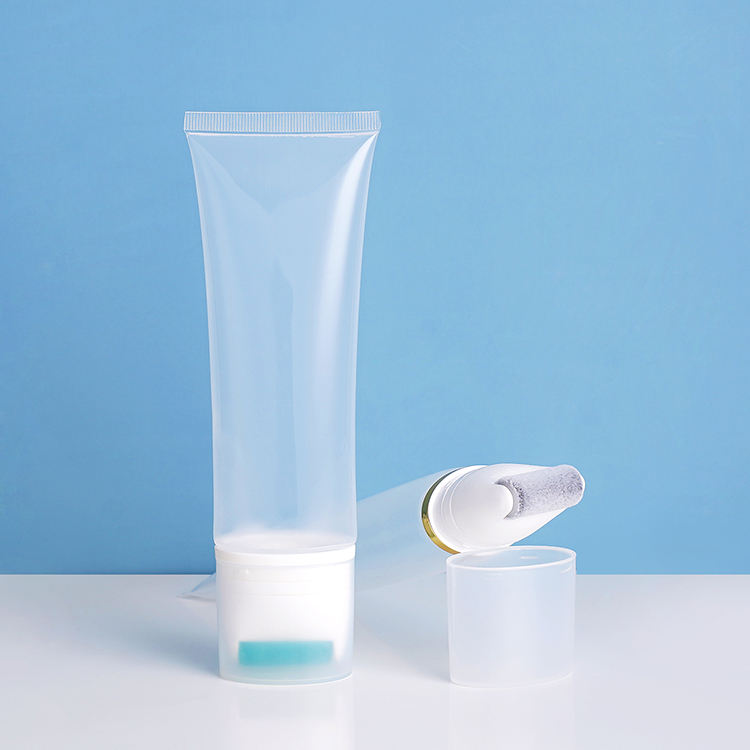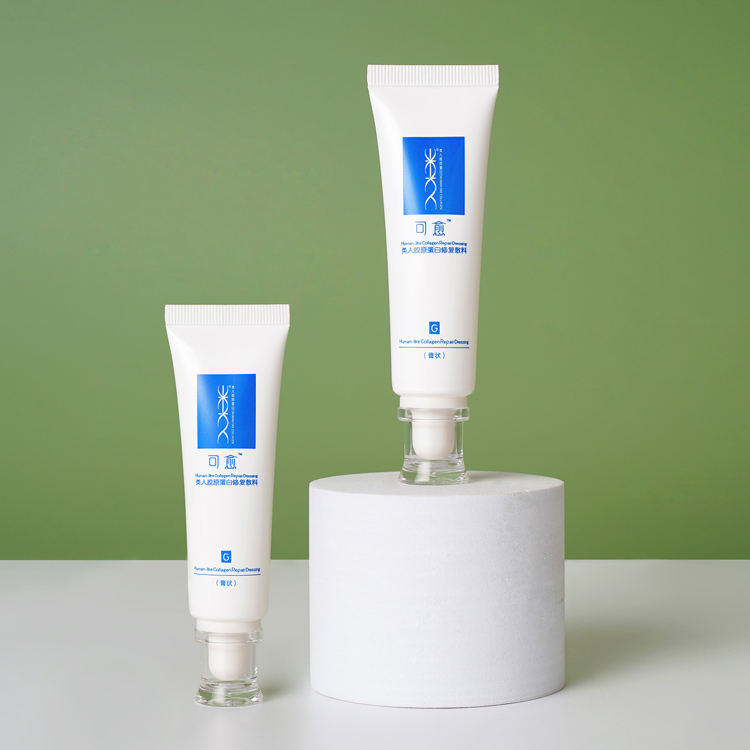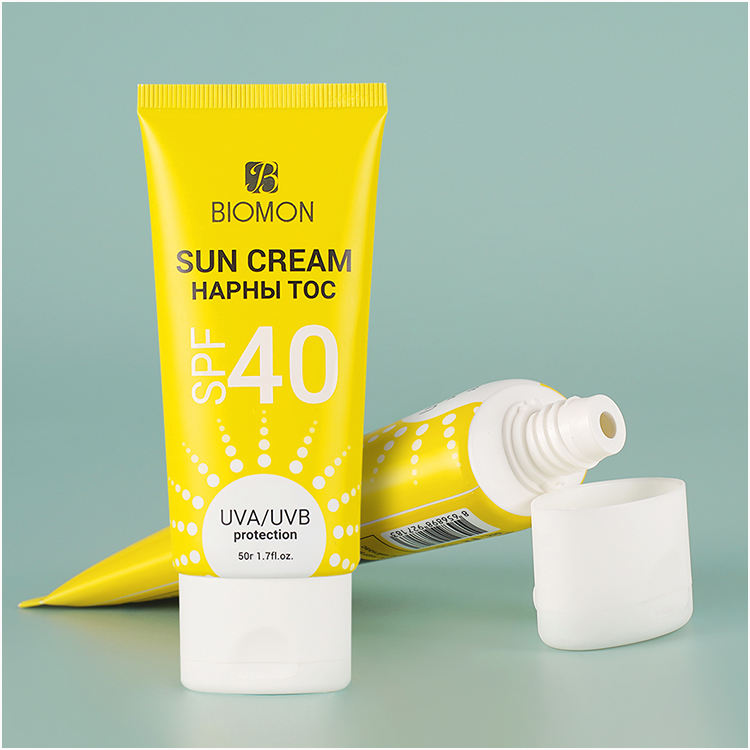Choosing the right tube material is a fundamental decision for cosmetic packaging manufacturers. The material you select affects product compatibility, production costs, printing and finishing options, shelf appeal, sustainability messaging, and—ultimately—customer satisfaction. Two common choices in the market are plastic tubes (a category that includes materials like PP and PET or multi-layer laminated constructions) and PE (polyethylene) tubes (LDPE, HDPE, LLDPE, and their blends). Both are widely used across skincare and cosmetic categories—and both have distinct strengths.
This article explains the differences, outlines real-world trade-offs, and highlights the practical factors manufacturers should weigh. Jinguan—an OEM/ODM tube manufacturer with 21+ years of on-demand printing and packaging experience—offers both plastic and PE tube options and can help brands choose a solution that matches product needs and business goals.
What Do We Mean By ''Plastic'' vs ''PE''?
Plastic tubes are a broader term often used to describe tubes made from materials such as PP (polypropylene), PET (polyethylene terephthalate), multi-layer laminated constructions, or co-extruded blends. These can include rigid or semi-rigid tubes and are frequently used when higher clarity, strength, or barrier properties are required.
PE (polyethylene) tubes are specific: they are made from LDPE/HDPE/LLDPE or blends and are typically flexible squeeze tubes. PE is extremely common for cosmetic squeeze tubes due to its softness, squeezability, and forgiving sealing properties.
Both categories overlap in capability and in the supply chain—many modern tubes are multi-material constructions that combine advantages of each.
Key Performance Comparisons
1. Compatibility with Formulations
- PE tubes: Great for creams, lotions, gels, and many personal care formulations because PE is chemically stable and flexible—making it easy to squeeze product out.
- Plastic (PP/PET/laminates): Often used for products that need higher barrier protection (e.g., formulas sensitive to oxygen or UV) or when a glossy, premium finish is desired. Laminated tubes can provide superior barrier properties for sunscreens or light-sensitive actives.

2. Squeezability & User Experience
- PE: Offers the familiar''squeeze'' feel most consumers expect from skincare tubes. It's forgiving—good for travel-size or daily-use formats.
- Plastic variants: Some rigid plastics feel firmer; designers can tune that firmness for a more "premium" dispensing experience. Roll-on or applicator heads are compatible with both categories, but internal neck design may vary.
3. Printability & Finishing Options
- Plastic (PP/PET/laminate): Excellent surface for high-resolution printing, glossy finishes, metallic foils, and sophisticated brand effects. Laminated tubes also preserve print quality on barrier layers.
- PE: Works well with silk-screen, offset, and pad printing; matte finishes and soft-touch coatings are common. Advanced printing is possible—just consider ink adhesion and finishing choices during material selection.
4. Barrier & Shelf Life
- Laminated plastic tubes / multi-layer constructions: Provide stronger barriers to oxygen, moisture, and UV—helpful for sensitive or active-heavy skincare lines.
- PE tubes: Adequate for many formulations but may require additional layers or laminates for highly sensitive products.
5. Cost & Production Efficiency
- PE tubes: Typically more cost-effective in bulk; lower material and processing costs often result in a lower unit price—important for wholesale runs and high SKU counts.
- Plastic laminates and premium plastics: Higher material and processing cost but may be justified for luxury positioning, premium margins, or when barrier properties are non-negotiable.
6. Sustainability & Recyclability
- PE: Widely recyclable in many systems (check local recycling rules). PCR (post-consumer recycled) PE options are increasingly available and popular with eco-conscious brands.
- Multi-layer laminated plastics: Can be more challenging to recycle because of mixed materials—though newer mono-material and recyclable laminate technologies are emerging. Work with your supplier to understand end-of-life solutions.

Practical Factors When Selecting Tubes for Manufacture
- Product Formulation: Test compatibility (migration, stability, shelf life). Some actives require stronger barrier protection.
- Brand Positioning: Premium cosmetics may need glossy, embossed, or metallic finishes—material choice affects achievable aesthetics.
- Dispensing Preference: Squeeze vs firmer tube vs roller applicator—consider consumer experience.
- MOQ and Lead Time: Wholesale pricing and minimum order quantities vary by material and finishing complexity.
- Regulatory & Safety Needs: Ensure materials meet regional regulations (e.g., EU REACH, FDA guidelines) and required testing protocols.
- Sustainability Targets: Decide whether PCR material, mono-material constructions, or fully recyclable options are required.
Common Tube Types and Use-Cases (Quick Guide)
- PE squeeze tubes: Everyday moisturizers, hand creams, and travel-size lotions.
- Laminated tubes (multi-layer): Sunscreens, high-activity formulas, and dermatological creams.
- PP/PET tubes or composite tubes: Premium serums, thicker formulations, or where clarity/rigidity is desired.
- Tubes with roller applicators or custom heads: Eye products, targeted serums, and massage treatments—compatibility should be confirmed during sampling.
How Jinguan Helps OEM/ODM Manufacturers Decide
At Jinguan, we manufacture both plastic and PE tubes and work with brands to find the right balance of cost, performance, and aesthetics. Our approach includes:
- Formulation compatibility testing to recommend appropriate material types and barrier layers.
- Sample runs for finishing, printing, and applicator fit to validate look-and-feel before full production.
- Flexible MOQ options that support pilot launches and large wholesale orders.
- Multiple printing and finishing capabilities (silk screen, hot stamping, matte/soft-touch coatings) so brands don't compromise on design.
- Sustainable alternatives including PCR-PE and recyclable construction options, are available upon request.
With 21+ years of OEM and on-demand printing experience, Jinguan pairs technical knowledge with manufacturing scale to help brands launch reliable, attractive packaging.

Decision Checklist for Manufacturers
- Run product stability tests with candidate tubes.
- Evaluate desired consumer experience (squeeze profile, dispense control).
- Confirm printing/finishing needs and request samples.
- Compare lifecycle cost: unit price, fill-line compatibility, transport, and returns.
- Discuss sustainability options and end-of-life implications with your supplier.
Conclusion
There is no single "best" choice universally—both plastic tubes and PE tubes have their place depending on formulation, brand positioning, barrier needs, cost targets, and sustainability priorities. For many manufacturers, the right solution is a pragmatic, use-case-driven choice: PE for flexible, cost-effective squeeze tubes; plastic (or laminated/multi-layer constructions) for barrier protection or premium finishes.
If you're evaluating tube materials for a new SKU or scaling production, partnering with a manufacturer that offers both options—and the technical guidance to match material to product—is invaluable. Jinguan manufactures both plastic and PE tube types, provides OEM/ODM support, and helps brands choose and validate the best material for their cosmetic products. Contact Jinguan for samples, technical consultation, and quotes tailored to your product line.


